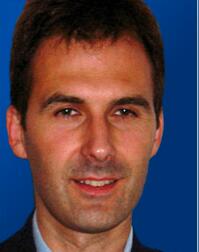


Abstract—5G provides businesses with high-speed Internet access, faster bandwidth, and low latency. The use of IoT and 5G-enabled sensors provides new opportunities within networks. There are several use cases of 5G with IoT health care, agriculture, remote learning, logistics, manufacturing, government, and retail. However, some security and privacy problems must be addressed within the 5G ecosystem. There is a need to secure user and device associations and data integrity as 5G is becoming more and more popular. In this research-in-progress, we seek to solve security and privacy problems in 5G by applying Blockchain technology to secure 5G connections. The research will consist of an interdisciplinary team of researchers from Illinois State University (ISU) and non-academic-industry partners. During the study, we build a prototype that solves problems in agriculture and healthcare. A private 5G network is installed at ISU. Moisture sensors and IoT devices are installed at the university farm to monitor soil moisture. Tracking soil moisture helps to conserve water. Additionally, we also work with a local clinic and provide underserved patients with chronic illnesses with sensors and IoT devices that help them track and monitor their chronic conditions. The patients will have monitors that track blood pressure and blood sugar. The IoT devices and sensors send collected data to a database accessible by healthcare professionals at the clinic. This helps the patients receive care that helps them manage their conditions better. Blockchain will be applied during the proposed study to secure communications between the sensors at the university farm and the private 5G network. Blockchain is also be applied to secure communications between the patients and healthcare providers at the clinic. The collected results are analyzed to see if there is a significant difference in suspicious activities in agriculture and healthcare communications. The results have a broader impact, including helping underserved community members to receive good care in managing their chronic conditions. The results also help secure other use cases of 5G with IoT devices.
Index Terms—5G, blockchain, security and privacy, healthcare security, IoT devices, moisture sensors.
Stephen Mujeye, Jihad Qaddour, Sameeh Ullah, Susan Calderon, Rob Rhykerd, Charles Edamala, and Fanson Kidwaroare with Illinois State University, USA
*Correspondence: smujeye@yahoo.com
Cite: Stephen Mujeye*, Jihad Qaddour, Sameeh Ullah, Susan Calderon, Rob Rhykerd, Charles Edamala, and Fanson Kidwaro , "A Proposal on How to Use Blockchain to Secure Communications in 5G Ecosystem ," International Journal of Future Computer and Communication vol. 12, no. 1, pp. 14-18 2023.
Copyright © 2023 by the authors. This is an open access article distributed under the Creative Commons Attribution License which permits unrestricted use, distribution, and reproduction in any medium, provided the original work is properly cited (CC BY 4.0).
Copyright © 2008-2024. International Journal of Future Computer and Communication. All rights reserved.
E-mail: ijfcc@ejournal.net